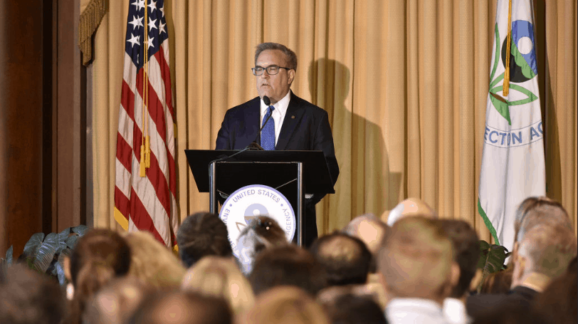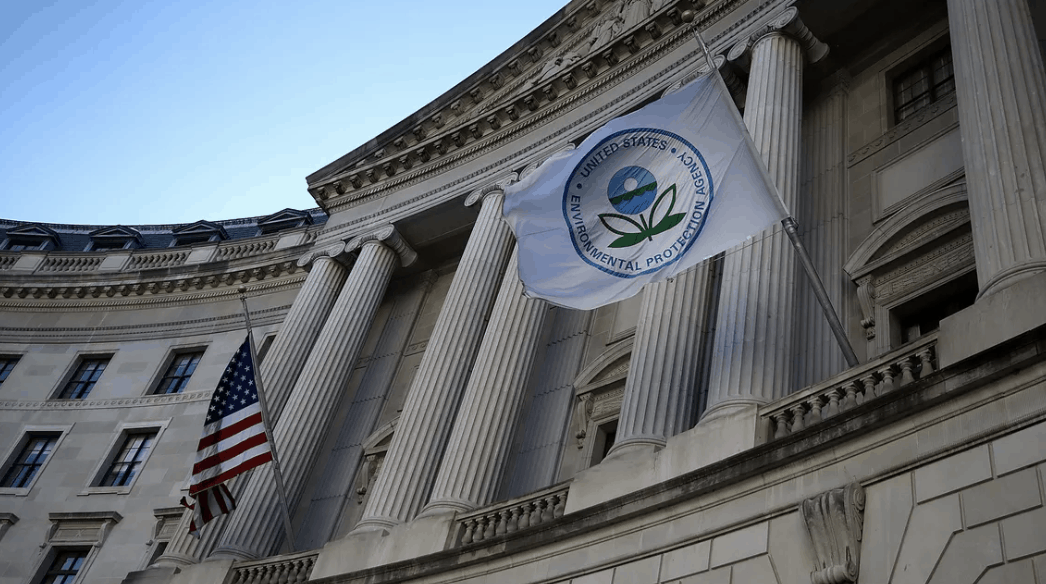EPA’s Andrew Wheeler Appoints John Christy to Science Advisory Board

 Environmental Protection Agency (EPA) Acting Administrator Andrew Wheeler on January 31st announced the appointment of some 29 experts to serve on the agency’s Science Advisory Board (SAB) and its four standing committees on agricultural science, chemical risk, drinking water, and radiation.
Environmental Protection Agency (EPA) Acting Administrator Andrew Wheeler on January 31st announced the appointment of some 29 experts to serve on the agency’s Science Advisory Board (SAB) and its four standing committees on agricultural science, chemical risk, drinking water, and radiation.
Wheeler appointed eight new members to the SAB while reinstating eight others appointed by the Obama administration. He also appointed or nominated 26 new members to the standing committees. See EPA’s news release for the details.
The appointed and reappointed board and committee members “include experts from a wide variety of scientific disciplines who reflect the geographic diversity needed to represent all ten EPA regions,” according to the release. It explains: “Having expert scientists on the SAB who bring wide-ranging scientific perspectives and come from all across the country has been a point of emphasis for this Administration. In FY 2019, 30 states and the District of Columbia will be represented on the SAB and its standing committees.”
The big news for climate realists and energy freedom advocates is Wheeler’s appointment of University of Alabama in Huntsville atmospheric scientist John Christy to serve on the Science Advisory Board. The Washington Post’s article on the appointments gets some stuff right about Christy.
The Post writes: “Pointing to his own analyses of satellite temperature data, which suggest that observed warming is on the lower side of projections, Christy has argued that atmospheric temperatures are less sensitive to the buildup of greenhouse gases than the majority of other climate scientists say they are.” Spot on.
The Post also lets Christy summarize his criticism of the endangerment finding underpinning EPA’s greenhouse gas regulations. Christy told the Post: “I, as well as many others, am very skeptical of the basis of many of these findings, like the endangerment finding.” He explained: “If you use bad models, you are likely to come up with bad regulations.”
The Post in addition quotes Christy’s explanation of why climate science is a “murky” discipline: “We do not have laboratory methods of testing our hypotheses as many other sciences do. As a result, what passes for science includes opinion, arguments-from-authority, dramatic news releases, and fuzzy notions of consensus generated by preselected groups.”
However, the Post gives the last word to Pennsylvania State University climatologist and Christy-critic Michael Mann: “Mann . . . has argued that Christy’s findings have become ‘a central pillar in the case for climate change denial’ despite the fact they have ‘been shown to be an artifact of faulty computations.’” Yet earlier in the piece the Post acknowledges that “Christy acknowledges that humans have altered Earth’s climate.” Indeed, one cannot both argue that global warming is “on the lower side of projections” and deny climate change.
Moreover, Mann provides no information about Christy’s alleged “faulty computations.” So the Post’s report on Christy concludes with an appeal to authority, and a lame one at that.
A final observation. The Post describes Christy as a “polarizing figure within the climate science community for his criticism of mainstream climate models produced by NASA and the National Oceanic and Atmospheric Administration and of scientific conclusions about the severity of global warming reached by the United Nations Intergovernmental Panel on Climate Change.”
That’s exactly backwards. Climate science is “polarized” because “consensus” scientists demand fealty to a party line and viciously trash anyone who dissents from the narrative on which their political influence, prestige, and funding depend.